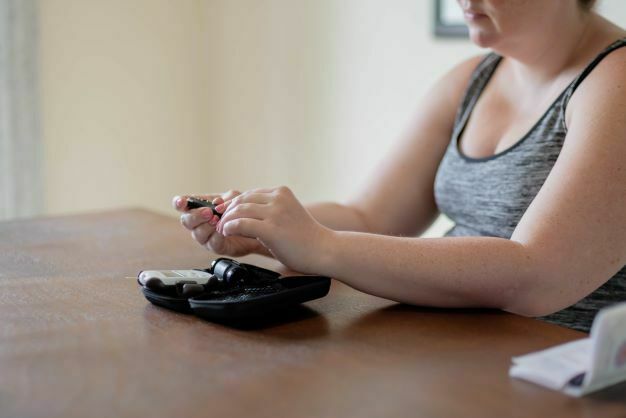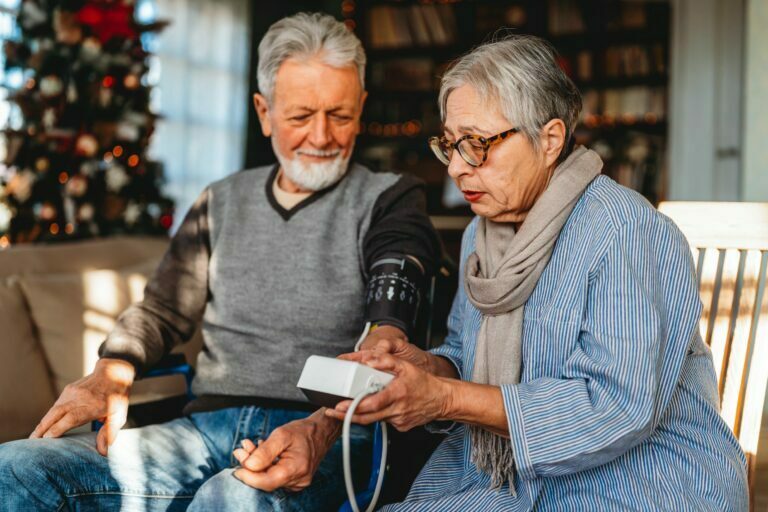Diabetic nephropathy is a common complication of type 1 and type 2 diabetic. Diabetic kidney disease is another name for it. Diabetic nephropathy affects around one-third of diabetics in the United States.(1) Diabetic nephropathy impairs the kidneys’ capacity to perform their normal function of eliminating waste and excess fluid from the body. The disorder gradually affects your kidneys’ delicate filtering function over time. Early diagnosis with remote patient monitoring and treatment can help to prevent or decrease the progression of the disease, as well as reduce the risk of complications.
What causes kidney disease in diabetics?
High blood glucose, often known as blood sugar, might impair your kidneys’ blood arteries. Blood vessels that have been damaged do not function well. High blood pressure, which is also common in people with diabetes, can also contribute harm to your kidneys.
What are the risk factors that can raise your risk of diabetic nephropathy?
- High blood sugar that is uncontrolled (hyperglycemia)
- High blood pressure that is uncontrolled (hypertension)
- Smoking
- High cholesterol levels
- Obesity
- Diabetes and renal disease run in the family
What are the complications of diabetic nephropathy?
- Fluid retention manifested as swelling in your arms and legs or fluid in your lungs
- A spike in your blood potassium levels
- Stroke can be caused by heart and blood vessel disorders
- Damage to the light-sensitive tissue at the back of the eye’s blood vessels
- Anemia
- Damaged nerves and blood vessels cause foot sores, sexual dysfunction, and other issues.
- Inability of the kidneys to maintain the proper balance of calcium and phosphorus in the blood causes bone and mineral diseases.
- Complications of pregnancy that pose a risk to both the mother and the developing baby
- End-stage renal disease causes irreversible damage to your kidneys, requiring dialysis or a kidney transplant for survival.
How to prevent diabetic nephropathy?
- As much as possible, keep your blood sugar levels within your desired range.
- A1C tests should be done at least twice a year, and more frequently if your medication changes or if you have other health issues. Consult your doctor to determine the best frequency for you.
- Regularly check your blood pressure and keep it below 140/90 mm/Hg (or the target your doctor sets).
- Maintain a healthy cholesterol level.
- Consume low-sodium foods.
- Increase your intake of fruits and vegetables.
- Get some exercise.
- Take your medications exactly as prescribed.
Remote Patient Monitoring and Diabetic Nephropathy
- Maintain regular diabetes management appointments. Maintain annual appointments — or more frequent meetings if your health care provider suggests it — to track your appointments remote patient monitoring can remind and alert you when entered on your platform.
- Diabetes should be monitored. Diabetic nephropathy can be avoided or delayed with proper and timely diabetes management. Remote patient monitoring can generate trends of your blood sugar and alert you when you deviate from normal.
- Control excessive blood pressure and other medical issues. Remote patient monitoring can also monitor and help treat high blood pressure or other diseases timely that can raise your risk of renal disease.
- Medications should be taken as directed. Taking medications on time and regularly helps a lot in diabetes control. Remote patient monitoring can alert you and monitor you on your intake of medications.
- Keep your weight in check. Remote patient monitoring can monitor your weight and can remind you of healthy habits such as increasing daily physical activity and consuming less calories.
Takeaway
Diabetic nephropathy is prevalent, and maintaining a healthy lifestyle, regular monitoring using remote patient monitoring, and properly treating your diabetes and high blood pressure are the greatest ways to prevent or delay diabetic nephropathy.
Read more:
5 Healthy Meals Under 500 Calories for People with Diabetes
5 Reasons Why Remote Patient Monitoring Help to Avoid Diabetes Medication Errors
8 Early Signs of Type 2 Diabetes
Reference:
- Centers for Disease Control and Prevention. Chronic Kidney Disease in the United States, 2019. Atlanta, GA: US Department of Health and Human Services. Centers for Disease Control and Prevention; 2019








